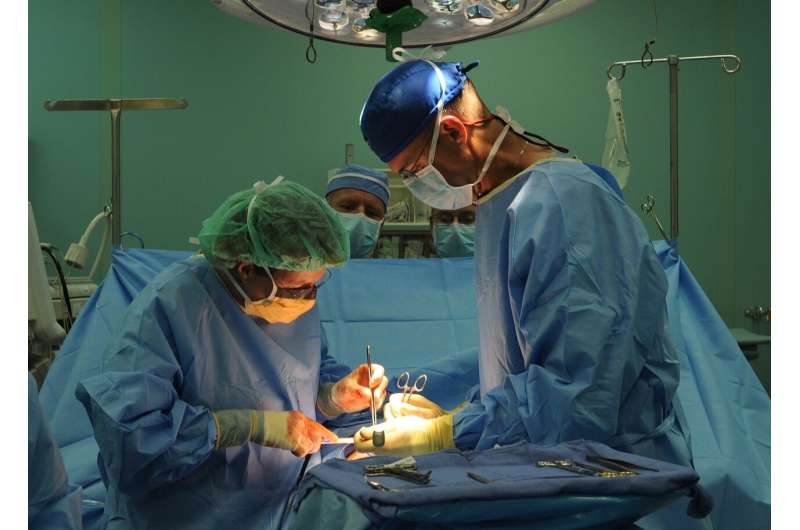Visceral surgery: Gut bacteria aggravate adhesions after abdominal surgery

A multidisciplinary international research team led by Prof. Daniel Candinas and Prof. Deborah Stroka at Inselspital and the University of Bern has succeeded in providing important evidence: The researchers have been able to identify the initial cells and primary trigger leading to the formation of adhesions in the abdomen after operations contaminated by intestinal bacteria. This provides the first promising starting points for a possible therapy.
Today, many abdominal surgeries are performed with minimally invasive techniques. Nevertheless, important, life-saving operations in the abdomen still involve major surgery. Following these surgeries, adhesions can form causing subsequent secondary problems. Previous work has been able to demonstrate that adhesions during sterile procedures are due to macrophages reacting to the opening of the abdomen. In their latest paper published in Nature Communications, the research group led by Prof. Dr. med. Daniel Candinas now reports on results of surgeries in which contamination caused by intestinal bacteria occurs.
Contamination through intestinal bacteria leads to more severe adhesions
During various operations (e.g. appendectomy, intestinal tumors), intestinal bacteria can enter the abdominal cavity. Such contamination results in more severe adhesions. The research team has now succeeded in showing what mechanisms cause these adhesions and what triggers the excessive cell growth. Interestingly, the formation of adhesions in the case of contamination due to intestinal bacteria works quite differently than after “sterile” operations.
Mesothelial cells are the origin
Adhesion formation begins with mesothelial cells. These are part of the repair mechanism that is supposed to restore injured tissue in the abdominal cavity. Dr. med. Joel Zindel, first author of the study, clarified, “Inflammation causes mesothelial cells to change their behavior. Instead of forming a smooth surface that should ensure smooth movement of the intestine, the cells now produce a large amount of scar tissue. It seems the inflammation, due in part to the contamination, is responsible for this reprograming of mesothelial cell proliferation.” Therefore, the search was on to identify the “programmer” responsible for the change.
EGFR is the main driver of the changed behavior of mesothelial cells
In the search for the trigger, the epidermal growth factor receptor (EGFR) could be determined as the decisive, active factor. In animal experiments, it was shown that EGFR signaling is the driving force when normal mesothelial cells change their role and start to form adhesions. This process is initiated by the inflammatory response after bacterial contamination. EGFR signaling is no stranger to this: It is known from cancer research as an important factor driving tumor growth.
The breakthrough: Evidence from the mouse model confirmed in humans
The extensive study did not stop at the animal model but attempted to demonstrate the newly discovered mechanism for the development of adhesions in humans. In fact, the researchers found that identical processes could be demonstrated. For this purpose, they contrasted patients with intestinal bacteria in the abdominal cavity (ruptured appendix) with those who had undergone surgery without prior exposure to contamination.
Possible approach to inhibit adhesions discovered
From the outset, the research team led by Prof. Candinas took a translational research approach. They were looking for measures that could be applied in the clinic to reduce adhesions after abdominal surgery. Prof. Daniel Candinas, head of the study, explains, “A big step has been made with the identification of the mesothelial cells as the origin and EGFR signaling as the most important driver of excessive scar formation. In the experiment, drugs were used, which in oncology inhibit the tumor growth factor EGFR. In fact, a reduction in adhesions was achieved, but only at very high doses.”
Important questions need to be clarified before therapeutic use
Source: Read Full Article
